Online Shopping Perceptions
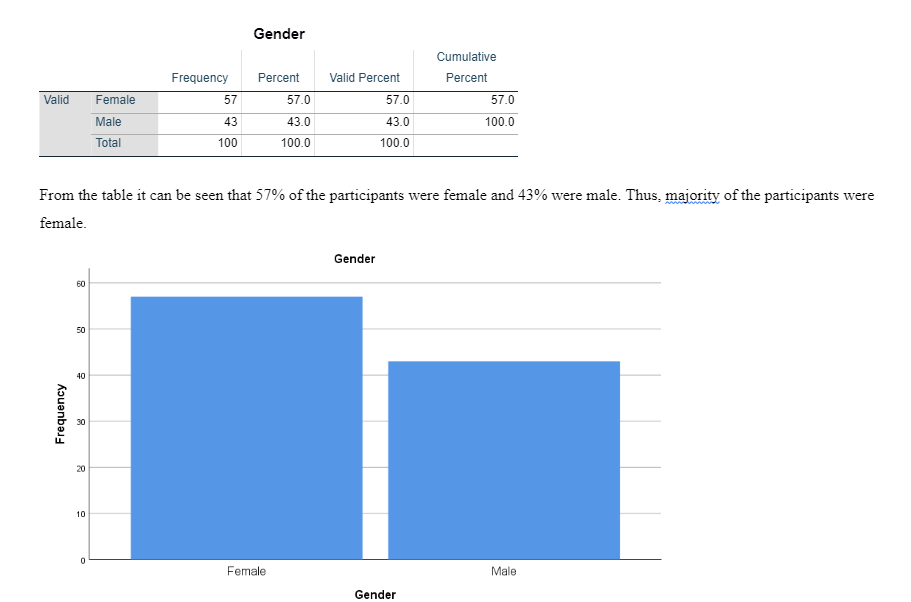



The above table shows that 29% of the respondents are confident while shopping online; while only 7% replied that they feel slightly confident. However, 64% replied that they feel very confident when making online purchases. This shows that a large number of people are extremely confident about buying different products online. It could be due to the fact that in recent years the e-commerce industry has grown and developed at a rapid pace, not only attracting a lot of people, but they have also become very accustomed and used to making online purchases. This shift in consumer behaviour is significant, and understanding it can be crucial for those seeking marketing dissertation help in analysing current trends. This shift in consumer behaviour is significant, and understanding it can be crucial for those seeking marketing dissertation help in analysing current trends.
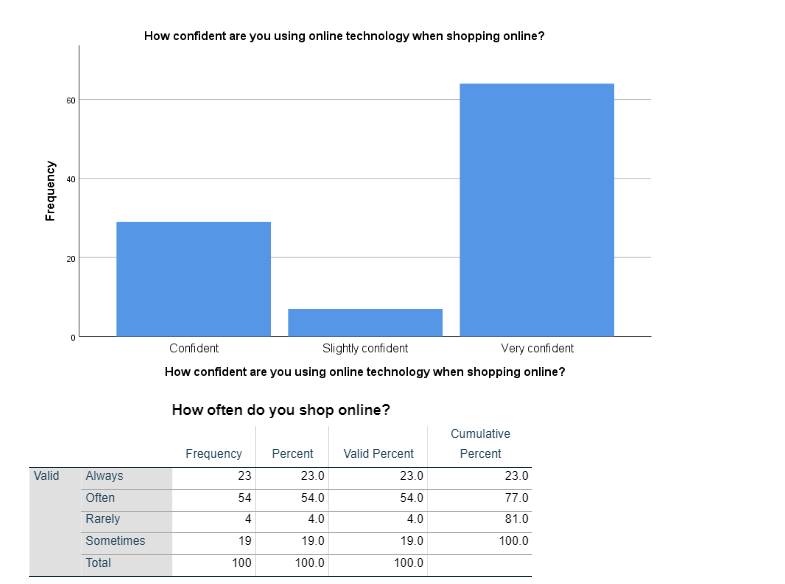
In terms of frequency of buying products online, 23% replied that they always use e-commerce; while 54% replied that they often use different e-commerce related platforms for making online purchases. Only 4% replied that they rarely buy products online; and another 19% replied that they use e-commerce sometimes for buying goods.


53% of the respondents replied that before COVID-19 they never used to do online shopping; while 20% said that they rarely used to shop grocery products online. 11% participants replied that they sometimes bought grocery online and 10% often made such purchases. But, only 6% replied that they always bought grocery products online.
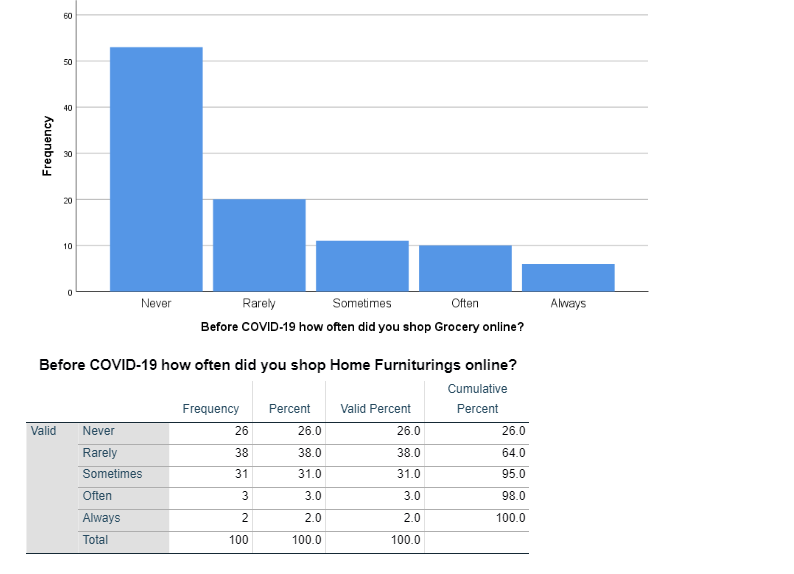
26% participants replied that before the COVID-19 pandemic, they never had purchased any kind of furniture online; 38% replied that they had purchased furniture online, but only rarely. Only 3% replied they often bought furniture online, while 2% replied they always bought the furniture online. But 31% participants replied that they sometime purchased furniture online before the CONVID-19 pandemic.


A total of 11% participants replied that before the COVID-19 pandemic they had never bought any technological or electronic product through e-commerce; while 25% replied that they rarely used online sites to buy such products. 37% replied they sometimes bought technology or electronic product online; while 21% replied that they often used to buy these goods online before the current pandemic of COVID-19. But only 6% replied that they always used online shopping sites to buy technological and electronic products online.
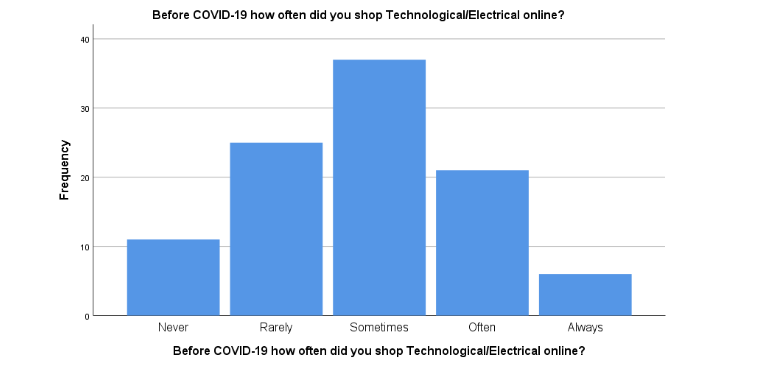

3% of the participants replied that they never bought clothes or shoes online before the current pandemic. While only 8% respondents replied that they had rarely used online shopping sites to buy clothes or shoes. 18% participants replied that they sometimes had bought such products using e-commerce sites. 49% participants replied that they often bought shoes or clothes online even before the current pandemic. 21% participants always relied on the online sites for purchasing clothes and/or shoes before the COVID-19 situation.


32% participants replied that they never had bought beauty products online before the current pandemic. 21% participants had rarely shopped for beauty product online before the COVD-19 pandemic. 17% participants replied they had sometimes bought such products online before the pandemic. 24% participants often used online sites to shop for beauty related products. On the other hand, only 6% participants always ordered beauty products online before the pandemic. This shows that majority of the people used to buy beauty products online even before the current pandemic.


Before the pandemic situation, only 2% of the population always used to buy pharmaceutical product online, and only 3% participants often bought pharma products online. On the other hand, 63% participants never had bought such products through e-commerce sites before the pandemic; while 18% rarely had bought such products and only 14% had sometimes bought pharma product online. On this basis, it can be said that the current pandemic situation, in a way has forced people to buy different products online, which they otherwise would not have bought using the digital mediums.

Even during the current pandemic of COVID-19, 43% participants never used online sites to buy groceries; while 10% used it on rare occasions, but 16% sometimes bought their groceries online. 21% participants often bought groceries online during the pandemic; while the remaining 10% always used online sites to buy grocery during the pandemic. This showed majority of the participants, even during the current pandemic did not buy groceries online.


Similar trend can be observed with furniture as well. 39% participants never bought any furniture online during the pandemic, while 17% rarely bought such products online. 25% participants replied that they sometimes bought furniture online, while 14% often bought these products, but only 5% replied that they bought furniture online during the current COVID-19 pandemic.
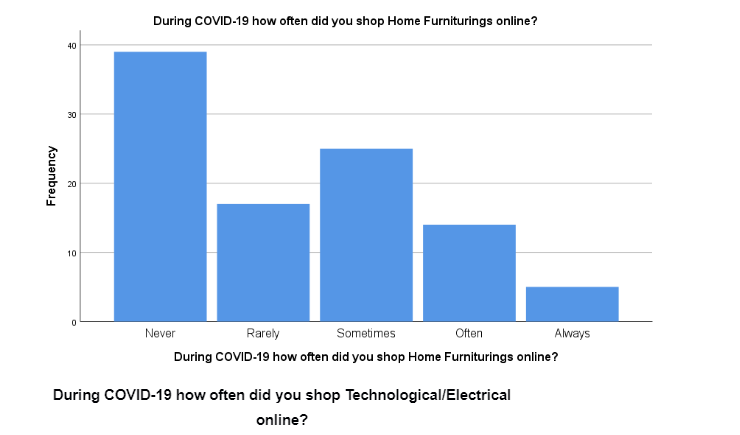

18% participants never bought technology and electrical related products online during the pandemic, while 12% rarely bought these products online. 35% participants sometimes bought technology and electrical products online during the pandemic; 18% often bought, and 17% always bought such products online. This shows that vast majority of the participants sometimes bought technology and electronic products online during the pandemic. On this basis, it can be said that slowly, customer trend is changing, as increasing number of people are trusting e-commerce sites and are buying technology and electrical products from them.
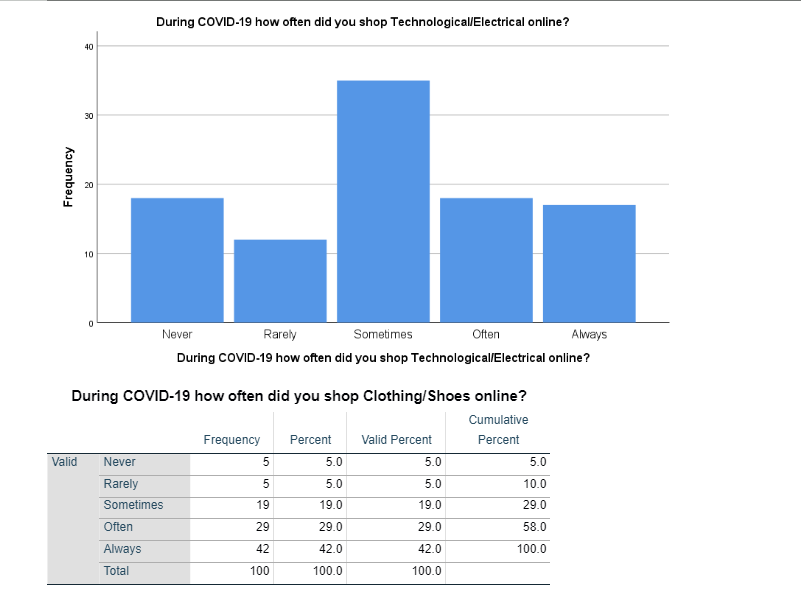
5% never bought any clothes or shoes online during the pandemic; and another 5% participants rarely bought these products online during the pandemic. 19% participants replied that they sometimes bought such products online, while another 29% replied that they often bought such products through online or e-commerce methods. 42% participants, during the current pandemic always relied on online shopping portals for buying clothes and shoes.


33% of the participants never bought any beauty products online during the current pandemic, while 12% rarely bought such products online. 11% sometimes bought beauty products online, 25% often relied on the e-commerce platforms for buying beauty products and 19% always bought such products from online sites during the pandemic. This shows that a considerable number of people relied on e-commerce sites for buying beauty related products during the situation of current COVID-19 pandemic.
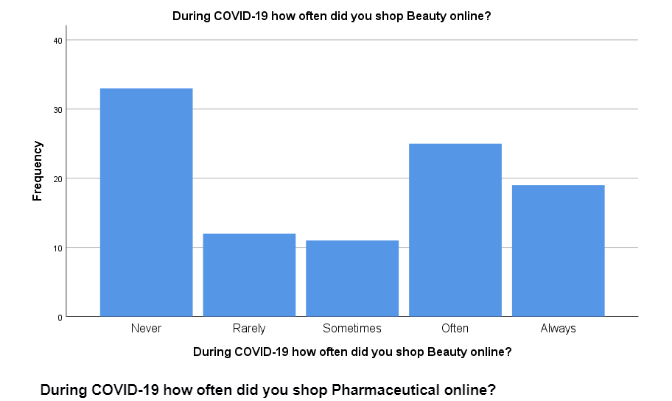

A vast majority of the participants (52%) never bought pharmaceutical products online during the pandemic; while 11% rarely used the online platforms for buying such products. 18% sometimes bought these products online, 12% often used the e-commerce sites, but 7% participants replied that they always used online platforms for buying pharmaceutical products during the pandemic. This shows that even during the current situation of the pandemic, not many people relied on online sites for buying pharma products. There could be numerous reasons behind this, for instance, not trusting these sites, as they are new, for delivering the right product or lack of availability of the required medicines on these sites could also be one of the reasons.


43% participants agreed that developments and changes in online technology have influenced their frequency of online shopping; but 3% disagreed with the statement; and 11% were neutral. 40% strongly agreed and 3% strongly disagreed. This shows that the developments that have been brought about in the world of online technologies have enabled people to increase their frequency of shopping for different kinds of products online. It can further be said that such developments have significantly influenced behaviour of people during the online shopping process.
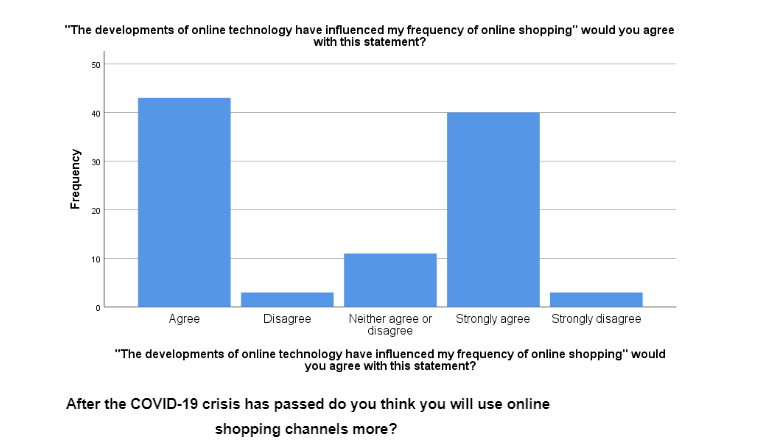

32% participants think that they definitely will continue using online shopping platforms even after the COVID-19 pandemic comes to an end; while 35% replied that they are more likely to continue using these sites. 25% think that they will probably continue using these sites even after the pandemic, but 8% will probably stop using these sites after the current crisis. On this basis, it can be said that a large number of people have become accustomed to online shopping and have find it very convenient as well; and therefore they will continue using the e-commerce platforms for fulfilling their various shopping requirements.
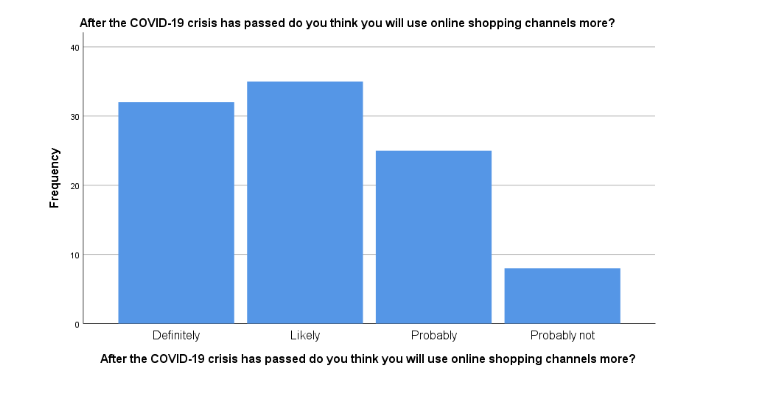

From the above table it can be seen that 32% of the participants never bought any type of grocery online before and even during the COVID-19 crisis. On the other hand, 3% participants had rarely purchased groceries online before and during the crisis. 3% sometimes bought these products online; while 2% often bought such products online. But, 6% participants replied that they always bought groceries online before and during the crisis as well. 6% of the participants rarely bought any grocery online before the crisis, but then they never bought any grocery online even during the pandemic. 4% participants never bought groceries online before the pandemic, but such behaviour changed only slightly during the crisis as they rarely purchased their groceries online. 8% participants never bought groceries online before the pandemic, but sometimes bought such products during the current crisis. 9% had never bought any grocery online before the crisis, but during the pandemic, they always relied on the e-commerce portals for their grocery related needs.
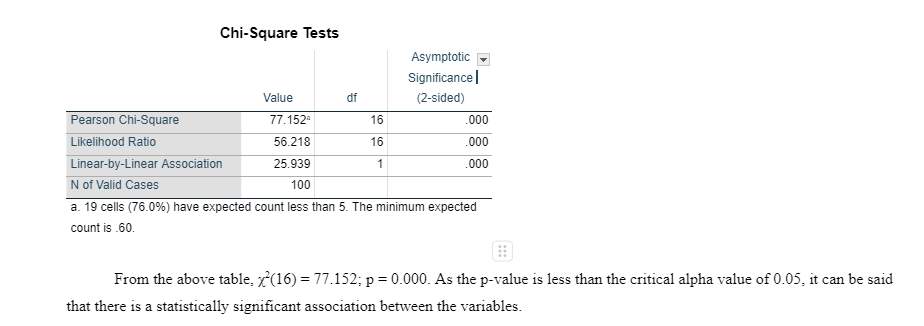


As per the above crosstab above, 21% participants had never bought furniture online before and even during the crisis. Similarly, 1% participants had never bought furniture online before the COVID crisis but then during the crisis they rarely used e-commerce sites for buying furniture. 3% participants never bought any furniture online before the crisis but bought such products online during the crisis. On the other hand, 1% participants never used online sites for buying furniture before the crisis, but often used it during the COVID crisis. Furthermore, 11% participants rarely bought furniture online before the crisis, but this changed during the crisis, as they stopped buying furniture online altogether during the crisis. 13% participants rarely bought furniture before and during the course of this crisis. 9% participants rarely bought furniture online before the crisis, but then they used such platforms sometimes during the pandemic. Moreover, 4% respondents had rarely bought furniture online, but often bought furniture online during the crisis. Only 1% participants had rarely used the online channels for buying furniture before the crisis period, but always used it during the crisis. 6% participants sometimes bought furniture online before the crisis, but never made such purchases using online mediums during the crisis. 3% had bought furniture online before the crisis, but rarely did not do so during the sources. However, 13% participants had only sometimes bought any furniture before and during the crisis. 8% participants had bought furniture online only sometimes before the crisis, but often bought furniture using online channels during the crisis times.



On the other hand, 5% participants replied they had rarely bought any electronic or technology product online before the COVID crisis and similar trend continued during the crisis as well, because they never purchased any of such products through the online channels. 7% participants rarely bought technology or electronic goods before or during the crisis as well. 9% participants rarely bought such products before the crisis, but during the pandemic it changed, and they sometimes used the online mediums to buy such goods. 3% of the participants had sometimes purchased electronic or technology products online before the COVID crisis, which changed, and they never bought any such products during the time of the crisis. 3% participants sometimes purchased these products before the crisis, but they rarely did so during the crisis. 21% participants sometimes used the online channels before as well as during the COVID crisis period. 8% participants had only sometimes bought technology or electronic products before the crisis, the frequency of which increased during the crisis period to often. 2% participants sometimes used the online channels for buying electronic or technology products before the crisis and always during the crisis.


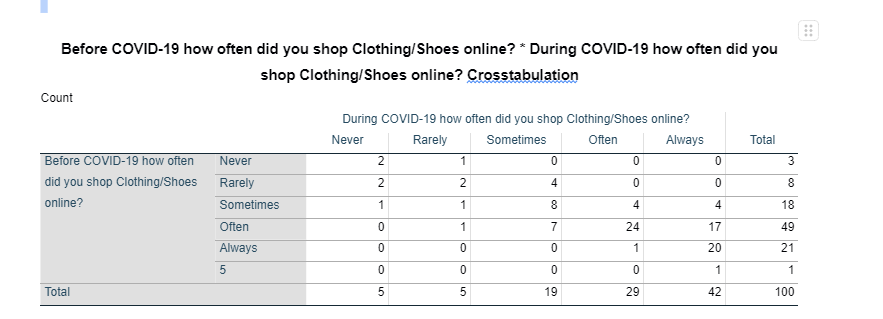
% participants replied that they never bought clothes or shoes before the crisis and the similar trend continued during the crisis as well. 1% participants had never bought such products before the crisis and they rarely did so during the crisis as well. 2% participants had rarely used the online channels for buying clothes or shoes before the crisis, but they never used these channels for buying the products during the course of the crisis as well. Additional 2% participants rarely used the online channels for buying clothes or shoes both before and during the crisis periods. 4% participants rarely bought furniture online, but during the crisis they sometimes bought these products. 1% participants sometimes bought these products online before the crisis, but never did so during the crisis period. Another 1% participants sometimes purchased clothes and shoes before the crisis, but rarely bought the goods during course of the crisis. 8% participants bought clothes and shoes online both before and during the crisis times. 4% of the participants only sometimes bought the clothes and shoes online, but they did do often during the crisis. Another 4% participants sometimes had bought clothes and shoes online, but they always bought these products during the time of the crisis. 7% participants had often bought clothes and shoes online, but during the crisis, they reduced it to using the online channels often. 24% of the participants often bought clothes and shoes through e-commerce portals both before and during the crisis times. Another 17% participants who used to often buy such items using online channels, always used the online mediums to buy these products.

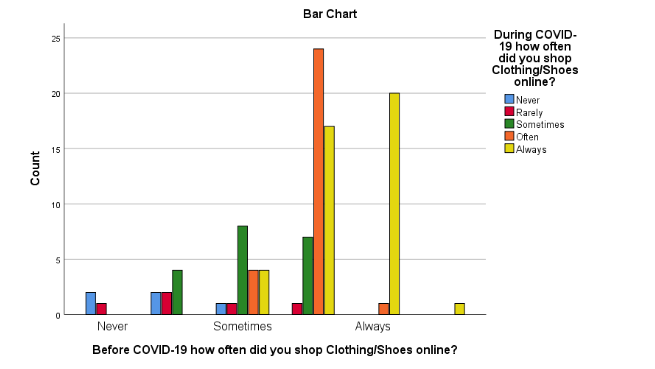


As per the above table, 26% participants never used online channels for buying beauty products both before and during the COVID crisis. 3% participants also never used these mediums before the crisis but did so rarely during the crisis time. 2% participants never relied on the online channels for buying beauty products before the COVID-19 crisis but used it sometimes during the crisis times; further, 1% participants also often used these channels during the crisis. 14% participants had often used the online channels before the crisis, but during the crisis as well they often relied on these channels for buying beauty products.

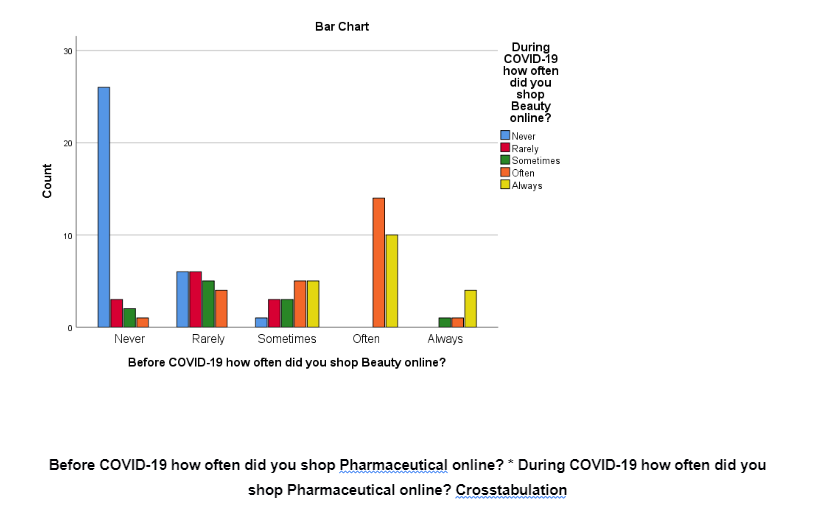

47% participants had never used the online channels before the crisis for buying pharma products, but they did not use these mediums during the crisis as well. 5% participants never used the online channels before the crisis, but they rarely used these methods during times of the crisis. 7% participants relied on using e-commerce channels for buying beauty products before the crisis, but sometimes used them for buying the pharma products during the crisis times.


17% female participants think that they will definitely use online shopping channels for buying different products even after the end of the COVID-19 crisis. Similarly, 15% male participants also think that they will definitely continue using the online mediums for purchasing different products. 22% female participants replied that they are likely to use online shopping even after the COVID crisis; while 13% male participants also replied the same. 11% female and 14% male participants replied that there is a probability that they will use online shopping even after the crisis. 7% female and 1% male participants stated that they probably will not use online shopping after the crisis is over.
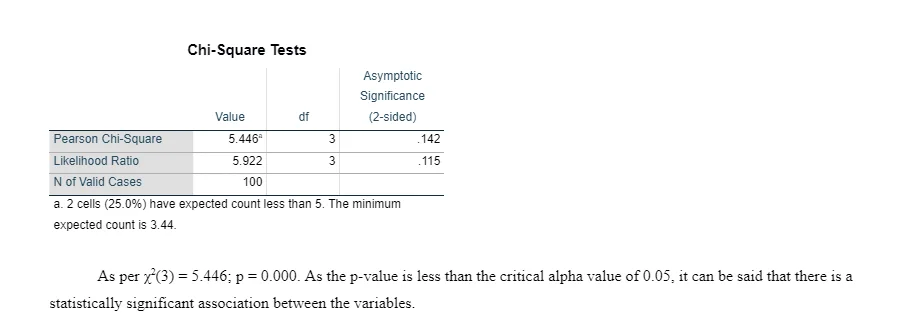

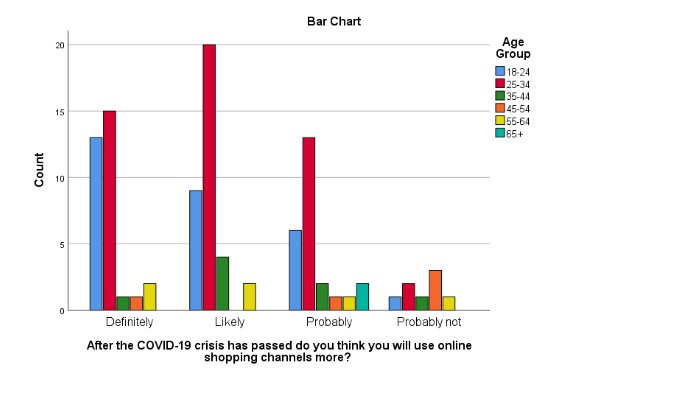
Continue your journey with our comprehensive guide to Normality Test Results Using Kolmogorov Smirnov Test.
- 24/7 Customer Support
- 100% Customer Satisfaction
- No Privacy Violation
- Quick Services
- Subject Experts



